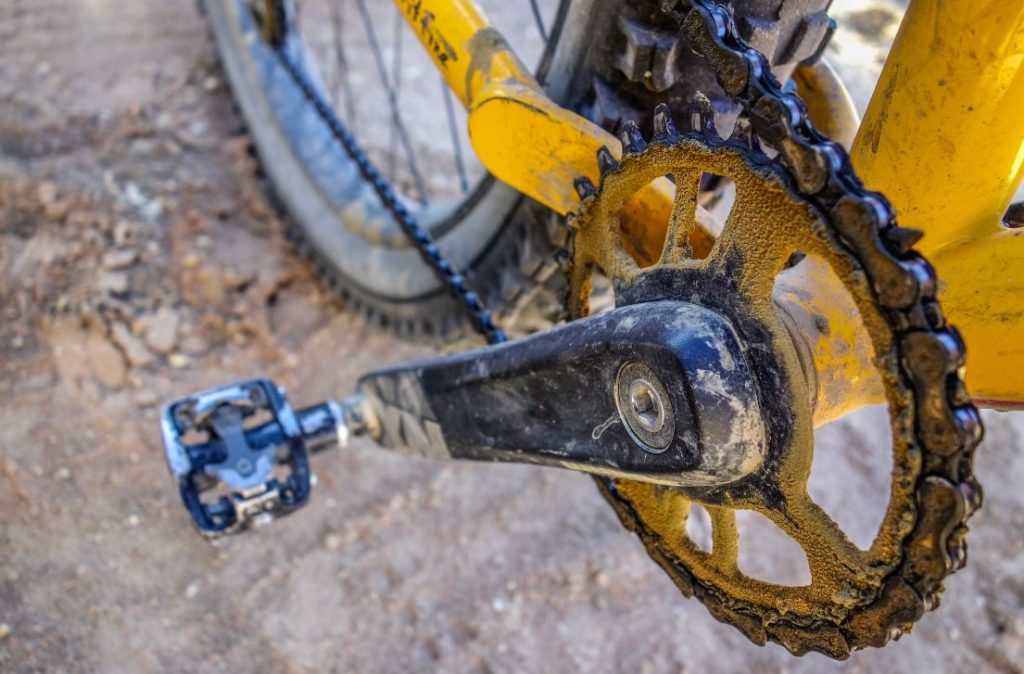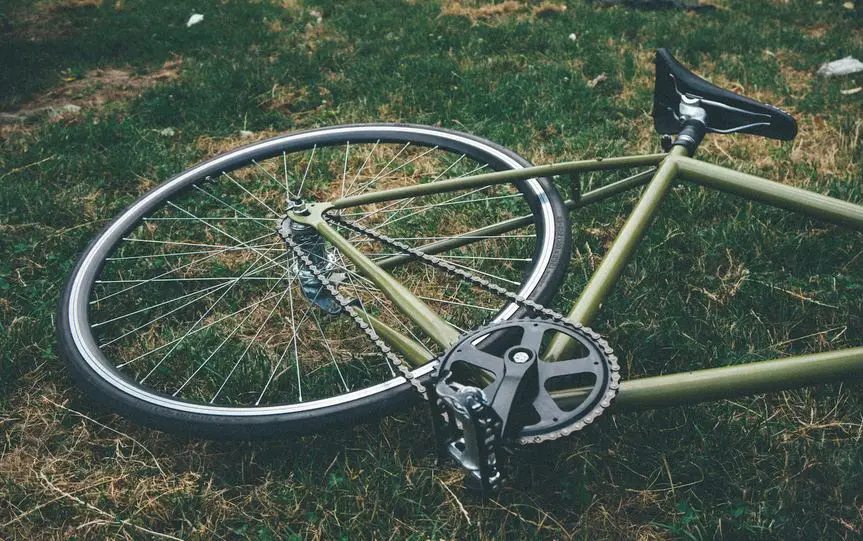You’re grinding up a hill, legs burning, heart pounding, when suddenly your chain slips and your power stroke is interrupted mid-pedal.
Before you know it, you’ve lost momentum and are wobbling to regain control.
There’s nothing more frustrating than a skipping chain when you’re riding hard!
I’ve been there before, trust me. One minute you’re cranking away, and the next you feel like someone just pulled the rug out from under you.
While a skipping chain can be super annoying, the good news is it’s usually an easy fix.
In this article, I’ll outline the common causes of a bicycle chain skipping under load and explain what should be done in each scenario.
#1 Worn Chain
A worn chain that has elongated and stretched from use can cause skipping and jumping when under load.
Also Read: How To Fix Chainring Wobble

As the chain wears, the spacing between the pins increases slightly. This extra space between the pins causes the chain to not mesh cleanly with the teeth on the cogs and cassette.
Under heavy pedaling force, the elongated chain can rise up on top of the cog teeth instead of sitting down between the teeth properly.
This lack of secure meshing allows the chain to skip forward when power is applied.
Replacing an excessively worn chain with a new one will restore the proper spacing between the chain pins and eliminate the chain skipping under load issue.
#2 Worn Cogs/Cassette
The cogs and cassette wear down over time along with the chain.
As the cog teeth become thinner and more pointed from use, they no longer interface correctly with a new or different chain.
A new or different chain on worn cogs can cause skipping and jumping when pedaling hard, because the chain rollers sit improperly on top of the thin, pointed cog teeth instead of correctly meshing between teeth.
To fix this, the worn cassette and chain should be replaced together to ensure optimal meshing tooth profiles between the two components.
#3 Bent Link
If a chain link becomes bent or tight, this damaged section may not flex and articulate smoothly over the cassette and chainrings.

A tight or bent link can cause predictable skipping as that spot comes around in the pedal rotation, like every third or fourth stroke.
Also Read: How to Tighten a Bike Chain
Solution?
Inspect the chain closely and use a chain tool to replace any damaged links.
#4 Misaligned Derailleur
If the rear derailleur is out of adjustment, it may not guide the chain at the proper angle onto the selected cog.
This allows the chain to bounce up on top of the teeth instead of slotting down between them.
To properly adjust the rear derailleur, you should adjust the limit screws and cable tension to realign the derailleur’s movements.
This provides better chain control and cleaner cog meshing that prevents skipping.
Here’s how to do it step by step:
#5 Weak Derailleur Spring
The derailleur spring provides the necessary chain tension to keep the chain taut against the cogs.
Also Read: Why Don’t Bikes Have Chain Guards Anymore
If this spring becomes stretched out and weak over time, it may not pull the chain tight enough, especially when under heavy loads.
The lack of tension allows the chain to bounce on top of cog teeth instead of meshing between them properly.
To restore proper chain tension and prevent chain skipping under load, you should replace the worn derailleur spring with a new spring.
#6 Bike Flex
Under extremely heavy pedaling forces, such as when standing up climbing, the bike frame and components can flex slightly from the torque.
This small amount of flex can momentarily throw the rear derailleur and chain out of alignment with the selected cog, allowing the chain to skip forward as it bounces on top of the cog teeth.
Using a stiffer, heavier frame can reduce the amount of flex and skipping.
Plus, proper bike fit to match the rider’s strength and weight can also help minimize flex issues.
#7 Cross-Chaining
Shifting into large/large or small/small gear combinations under load places the chain at extreme diagonal angles. These severe chain angles increase the chance that the chain does not seat cleanly onto the selected cog.
This improper meshing allows the chain to skip and jump teeth when pedaling hard in cross-chained gears.
Avoiding extreme gear combinations and unnecessary cross-chaining under load can prevent this issue.
FAQs
Bike Chain Slipping On Front Sprocket
If chain slips on the front sprocket, also known as the chainring, it is usually due to issues related to chain tension, worn-out chainring teeth, or a misaligned derailleur.
Chain Slipping On Smallest Cog
If your chain slips on the smallest cog, it’s usually due to a worn-out or stretched chain that no longer engages properly with the teeth of the smallest cog. A worn-out cog itself can also lead to slipping.

